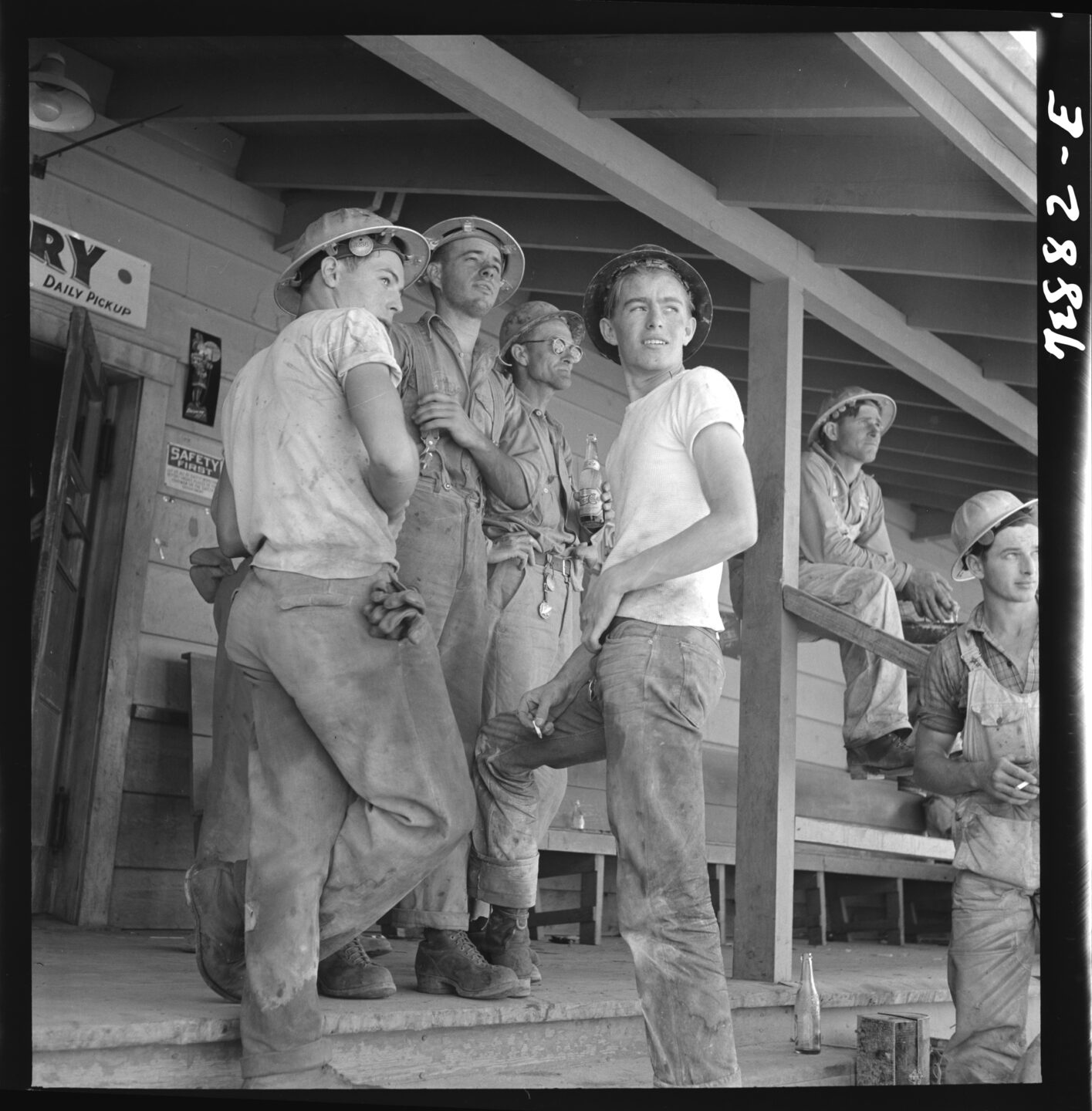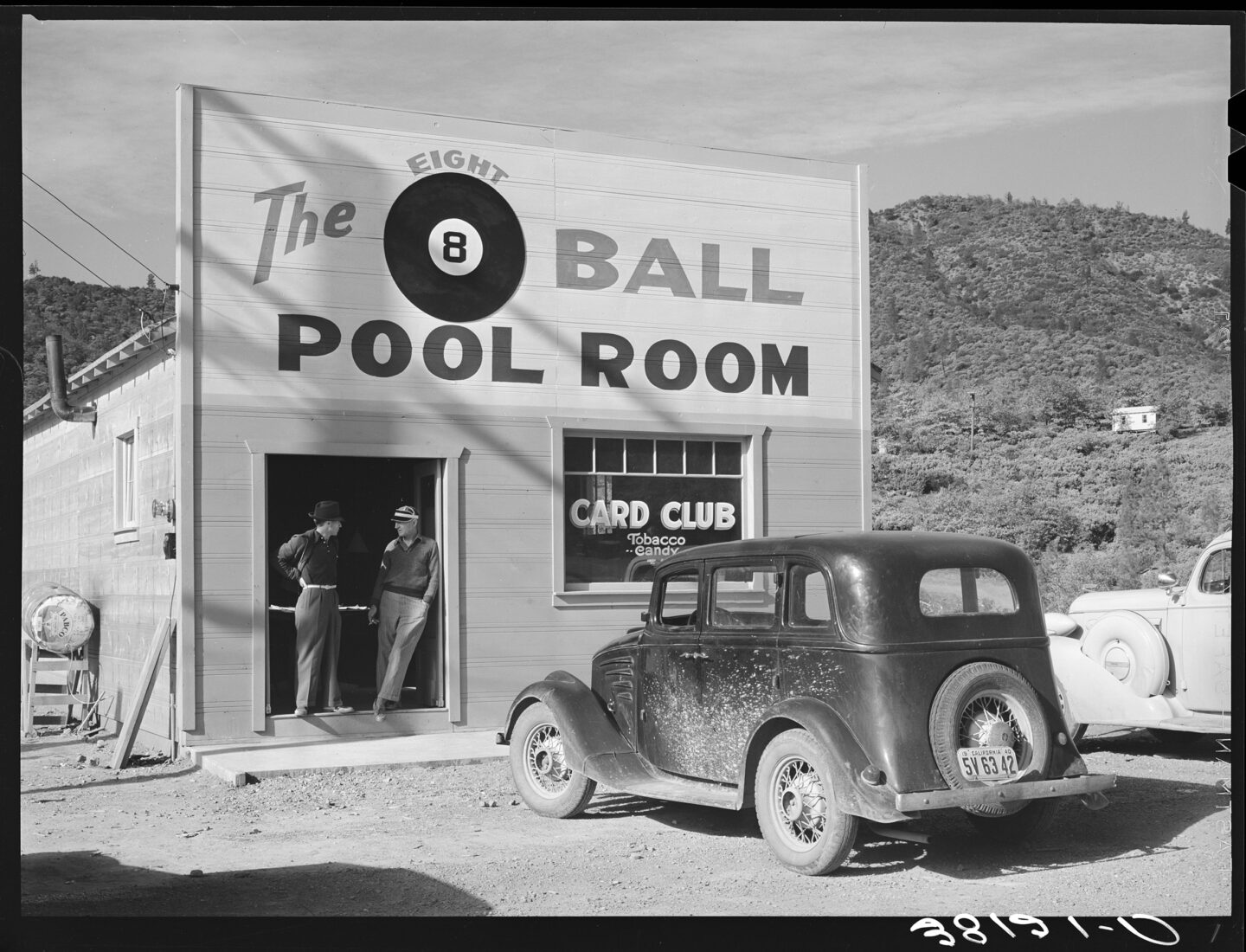Dam workers lined up for their paychecks. (Russell Lee/Library of Congress)
How the city of Shasta Lake was born
In the 1930s, a large dam proposal in Northern California promised a fresh bounty of power and water. But it was the labor required to build Shasta Dam, approved during the heart of the Depression, that captured the imaginations of workers across the West.
Thousands of impoverished families flocked to the Redding area, where they camped in tents and trailers and waited nervously for the hiring to begin. As it did, a boomtown atmosphere took hold, giving rise to grocery stores, taverns, and a school. An annual festival was organized that included a ceremonial burning of a coffin containing “old man gloom,” a reference to the dark days of the Depression.

Russell Lee/Library of Congress
Then, in January 1945, Shasta Dam was officially completed, making it the second-tallest dam in the world. With the onrush of World War II, a number of workers had left the area to join the service. Others snapped up better-paying jobs at the war factories of Southern California.

Russell Lee/Library of Congress
But the settlements didn’t fade away. After the war, a homebuilding boom fed the timber economy in Shasta County and the boomtowns thrived again. In 1993, a new city folded them under a single government: Shasta Lake. Seventy-five years after the last bucket of concrete was poured at the dam, they still burn the coffin every spring during the city’s annual Boomtown Festival.
Read more: cityofshastalake.org | S.F. Chronicle
Get your daily dose of the Golden State.